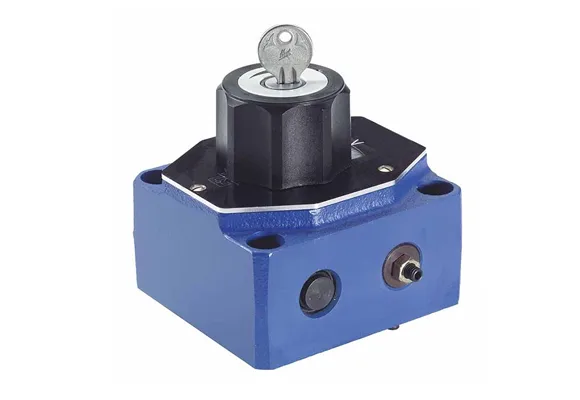How hydraulic flow control valves work
Hydraulic flow control valves are used to regulate or control the rate of fluid flow within a hydraulic system.
They play a crucial role in maintaining desired speeds, controlling actuator movements, and managing the overall
performance of Hydraulic Systems. There are several types of flow control valves, including
needle valves, orifice valves, and proportional flow control valves.
1. Needle Valve: A needle valve is a manual or adjustable valve that uses a tapered needle-like plunger to
restrict or regulate fluid flow. By turning the handle or adjusting the position of the needle, you can increase
or decrease the size of the opening through which fluid flows. This adjustment controls the flow rate.
2. Orifice Valve: An orifice valve consists of an orifice plate with a fixed-size hole through which fluid passes.
The size of this hole determines the flow rate. By changing the diameter of the hole
(using different plates), you can adjust and control the flow rate.
3. Proportional Flow Control Valve: Proportional flow control valves use electronic feedback signals to precisely
adjust and maintain desired fluid flow rates in real-time. These valves typically have a spool inside that moves
in response to electrical signals received from sensors or controllers. The position of this spool determines how
much fluid is allowed to pass through and thus controls the flow rate.
In all these cases, as you adjust or restrict fluid passage using these different types of valves, pressure
builds up upstream (before the valve) while downstream pressure decreases due to resistance caused by these restrictions.
It's important to note that hydraulic systems often involve both pressure and flow considerations simultaneously
since they are interconnected parameters affecting each other's behavior within an operating system.
Overall, Hydraulic Flow Control Valves provide precise regulation over fluid flows within hydraulic systems
by either manually adjusting an opening size (needle/orifice valve) or utilizing electronic feedback for dynamic
adjustments (proportional valve). Their function is critical for achieving controlled movement and optimal
performance in various applications ranging from industrial machinery to mobile equipment.
Saivs brand
- Gm5a series swing cylinder hydraulic motor for hydraulic winch
- hydraulic winch with free lowering function
- rexroth 4wrze10 4wrze16 4wrze25 4wrze32 series electro-hydraulic proportional directional valve
- Rexroth proportional reducing valve 3DREP6 Series
- Gear pumps series NSH32M
- Ultra-Low Pulse Vickers Eaton Double 20V Vane Pump
- Mobile Mast Aerial Work Platform
- A2VK SERIES Rexroth Hydraulic Pump Parts
- Tail gate Tailgate power unit
- Gear pumps sertes nsh50a
Related News
- overview of key parameters and benefits of vickers v10 v20 single vane pumps
- Trends in the Hydraulic Power Unit Market
- What are the advantages of electric winches and hydraulic winches
- Types and Working Principles of Hydraulic Control Valves
- A4VG28 Hydraulic Axial Piston Pump - Structure, Performance, And Application
